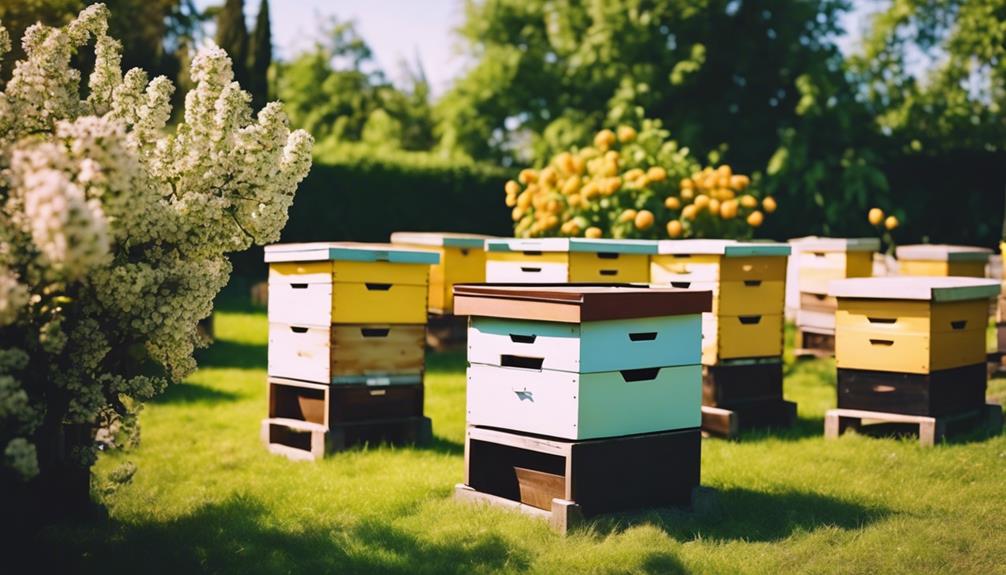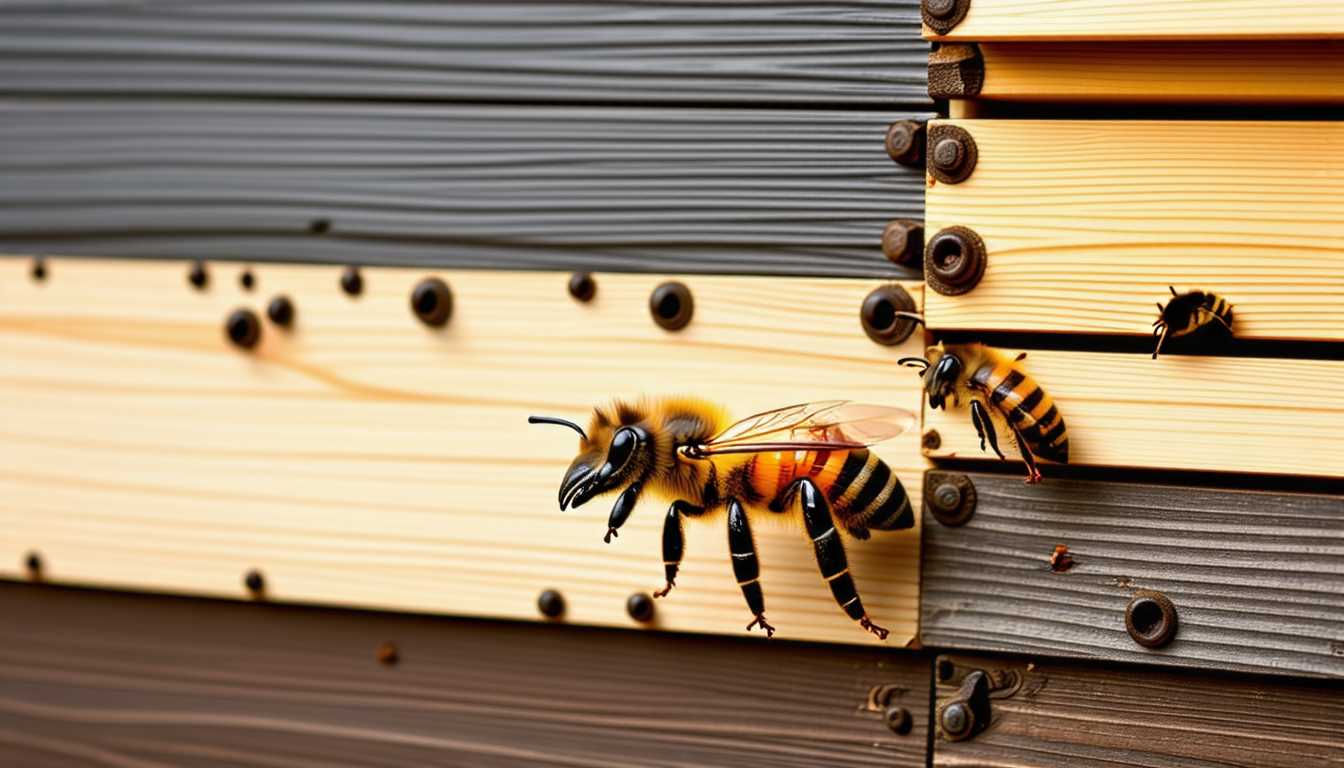Starting with at least two beehives is our strong recommendation if you’re diving into beekeeping. Having two hives isn’t just about doubling fun – it also helps with managing and learning the ropes better. Comparing the progress and behaviors between hives is like having a beehive competition right in your backyard, giving you insights and troubleshooting skills. Plus, sharing resources between them can lessen the sting of hive failures. If you want to know more about how hive numbers can impact your beekeeping journey, keep buzzing along for deeper insights into managing multiple hives and expanding your apiary.
Main Points
- Starting with at least 2 hives is recommended for better management and learning.
- Managing multiple hives allows for resource sharing and skill improvement.
- Comparing hive behaviors aids in maintaining bee health and preventing losses.
- Responsible beekeeping involves starting with a manageable number of hives.
- Having more than one hive acts as a backup and provides operational flexibility.
Factors Influencing Beehive Quantity
Why Should We Consider the Number of Beehives Needed?
Starting with two hives can be a game-changer for us beekeepers. It’s not just about having more bees; it’s about better management and learning. With two hives, we can compare their progress, troubleshoot issues, and share resources like the true busy bees we are. Imagine, if one hive falters, the other can offer support, reducing the sting of hive failure.
As beginners, multiple hives speed up our beekeeping experience. We get hands-on learning, see different scenarios, and improve our skills quicker. Additionally, as we increase hive numbers over time, our success rates climb, making our beekeeping journey sweeter with each bustling colony we nurture.
Beginner Beekeepers: Starting Hive Numbers
Starting with at least two beehives is highly recommended for novice beekeepers to improve their learning and management skills effectively. Beekeeping is a fascinating journey, and having two hives offers a great start to your adventure with bees.
With two hives, beginners can compare hive behaviors, experiment with different management techniques, and even rescue a struggling hive by combining resources from a stronger one. Additionally, starting with two hives increases the chances of successfully producing local honey, which is a sweet reward for your efforts.
As beginner beekeepers, managing two hives allows you to gain confidence and experience before considering expanding further. So, if you’re new to beekeeping, keep in mind that having two hives is often the best way to buzz into this exciting world!
Advanced Beekeepers: Managing Multiple Hives

To effectively manage multiple hives, experienced beekeepers prioritize regular monitoring and proactive problem-solving. Having more than one hive not only provides a backup in case of issues but also offers valuable learning opportunities. By comparing hives, beekeepers can improve their skills and gain insights into hive-to-hive differences.
Checking every two weeks allows for a comprehensive view of bee health, enabling prompt problem-solving to maintain bee health and increase chances of success. Managing multiple hives may seem challenging at first, but it ultimately leads to a more resilient beekeeping operation. With dedication and attention to detail, beekeepers can navigate the challenges and rewards that come with tending to multiple honey bee colonies.
Hive Expansion: Considerations and Challenges
When considering expanding your hive, it’s essential to carefully evaluate the suitability of your yard and address potential challenges proactively. Assess if your yard is suitable for more hives and if they’re placed away from property lines to maintain good neighborly relations.
Implement barriers to guide bee flight paths and provide water sources for your bees to guarantee their health and prevent issues. Be prepared for challenges like swarming and promptly address them to maintain hive health.
Evaluate the feasibility of expanding your apiary and consider preventive measures to manage additional hives effectively. Prioritize open communication with neighbors to address any concerns before expanding your beekeeping operation.
Optimal Beehive Number for Sustainability

For sustainable beekeeping practices, maintaining an ideal number of beehives is crucial for hive health and productivity.
- Starting with at least 2 beehives is recommended for better planning and success in beekeeping.
- Handling more than one hive allows for sharing resources like eggs, brood, and bees, enhancing learning opportunities.
- Comparing the hives helps maintain bee health and prevents complete loss of bees if one hive fails.
It’s important to bear in mind that responsible beekeeping involves starting with a manageable number of hives to guarantee the well-being of the colonies. Having more than one hive not only acts as a backup in case of colony loss but also provides flexibility for future seasons. So, beekeepers, start with at least two hives to attract bees and enjoy the rewards of good hive management.

Roger Thomas is a seasoned beekeeper and hive architect with a deep-seated passion for sustainable living. His fascination with bees has shaped his professional career, giving him practical and theoretical expertise in bee behavior, colony health, and optimal hive conditions. Roger’s technical skills shine in his bespoke hive creations that cater to the specific needs of diverse bee species, while his sustainable practices promote environmental balance and the wellbeing of the bee population.
As he continues his journey in beekeeping, Roger has become a dedicated advocate for responsible practices and an insightful educator in his field. His posts aim to inspire new beekeepers, underline the importance of sustainability, and showcase the remarkable contribution bees make to our ecosystem. Roger invites you to join him as he delves into the world of bees and the rewarding, honey-sweet art of beekeeping.


